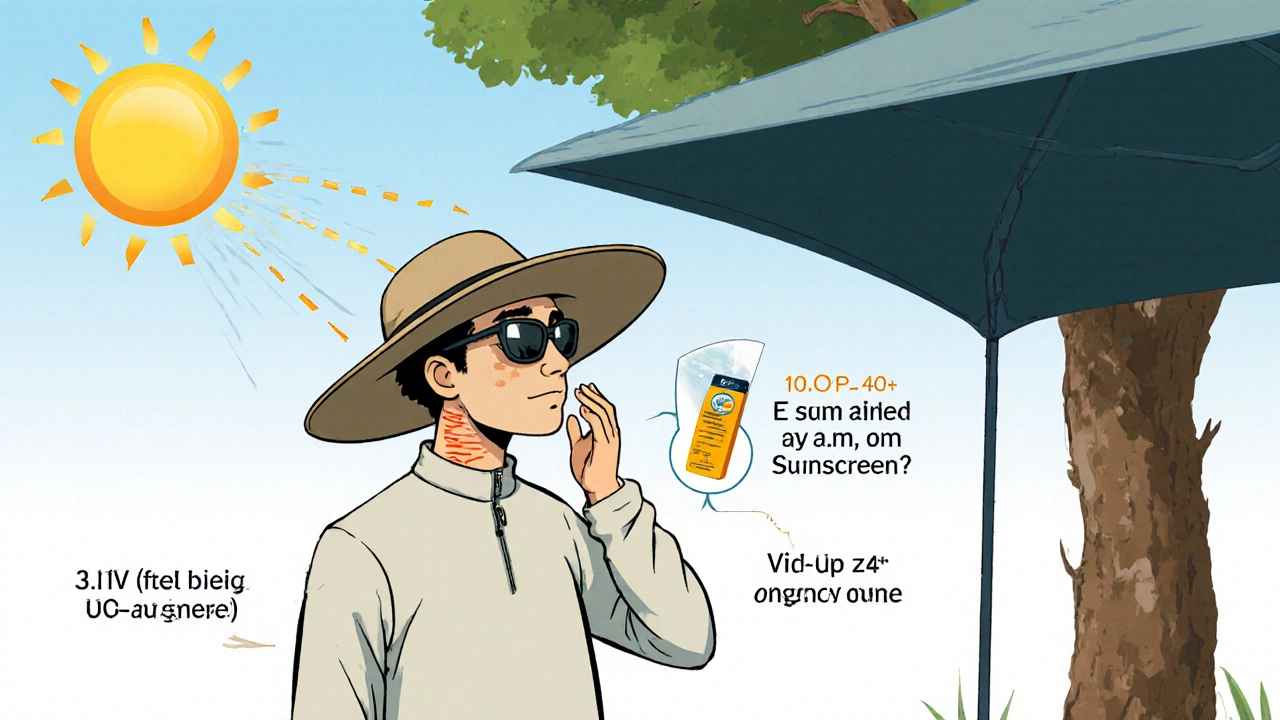When you step outside, you’re exposed to UV radiation, invisible ultraviolet light from the sun that can damage skin and eyes. Also known as ultraviolet light, it’s not something you can see or feel—but it’s actively changing your skin every day. Unlike visible light, UV radiation comes in three types: UVA, UVB, and UVC. Only UVA and UVB reach the Earth’s surface, and both are linked to skin aging, sunburn, and skin cancer. The World Health Organization says over 90% of skin cancers are caused by UV exposure. That’s not a distant threat—it’s happening right now, whether you’re at the beach, walking the dog, or sitting by a window.
Sunscreen, a topical product designed to block or absorb UV radiation is the most common defense, but it’s not the only one. Hats, sunglasses, and shade matter just as much. Many people think sunscreen alone is enough, but if you’re not reapplying every two hours or using enough, you’re still at risk. And not all sunscreens are equal—look for broad-spectrum protection that covers both UVA and UVB. The UV index, a scale that measures the strength of UV radiation at a given time and place tells you exactly how strong the sun’s rays are. When it hits 6 or higher, protection isn’t optional—it’s urgent.
UV radiation doesn’t just hurt your skin. It can also damage your eyes, leading to cataracts, macular degeneration, and even growths on the eyelid. People who spend time outdoors—construction workers, farmers, athletes—are at higher risk, but so are office workers near windows. UVA rays penetrate glass, meaning your car or home window won’t protect you. And UV exposure isn’t seasonal. Snow reflects up to 80% of UV rays, so winter sports can be just as dangerous as summer beach days.
There’s no safe way to tan. Tanning beds are just as harmful as the sun, if not worse. The International Agency for Research on Cancer classifies them as carcinogenic. If you want color, skip the lamp and use a self-tanner. Your skin doesn’t care how you get tan—it only remembers the damage.
What you’ll find in the posts below isn’t just about sunscreen brands or SPF numbers. It’s about real-world risks: how UV radiation connects to chemical eye injuries, why certain medications make you more sensitive to sunlight, and how to protect yourself when you’re on drugs that increase UV sensitivity. You’ll see how drug labels warn about photosensitivity, how people manage reactions after taking antibiotics or diuretics, and why some conditions make sun exposure dangerous. This isn’t theoretical. It’s practical, urgent, and tied to the medications you might already be taking.

Learn how to prevent painful photosensitivity reactions with proven sun protection strategies, including SPF 50+ sunscreen, UPF clothing, window film, and avoiding common triggers like medications and skincare products.